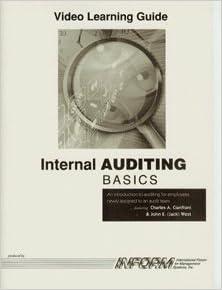5-97. Using a spreadsheet program and the ZZZZ Best financial statements provided in Appendix C, calculate the common-size statements and ratios presented in Tables 5C-1, 5C-2, and 5C-3. Which calculations did you have difficulty reproducing? Can you explain the meaning of each calculation? What did you learn about the relationship between the income statement and balance sheet? Table 5C1 ZZZZ Best Co., Inc. Income Statement Fiscal Year Ending Apr. 30 tehethle thon in 1985 , and what changed to significantly increase their balance in 10s6t Furiks, is thit an indication that the recogaition of sales thay have been delayed froen 1985 (6i) 14bi If wa does this contribate to the rapid revenue growth? A focensic accountant veld we these obvervations to develop tentative hypotheses, which would then be further mede micd Aifided in the introductery case, a ratio analysis shows dramatic deterioration in key ta= mog from 198 in 1986, as illustrated in Table 5C3. A poteatial explanation (as opposed to fuat which was uhimsalely discevered) is that management was unable to effectively manute oecompany 's rapid wrowth. However, a forensic accountant woold investigate these thotevistencief further to assess the possihility of fraud. Finally, the development of a cash flow analysis provides additional insights. While the cab flow statement provided in Table 5C4 highlights the inflow and outflow of cash from varous activities, the most interesting observation is the relationship of net income to accruals. Net income of $945,645 for year 1986 was driven primarily by increases in receivables ($693,773), unbilled charges on restoration contracts ($413,231), and other current a5: sets, including supplies ($115,477), prepaid expenses ($125,307), and advance on matenil purchases ($156,000). Professional skepticism requires a forensic accountant to determize the reasons for these changes during the year, as well as the authenticity of the year-ead balances. Possible questions raised by the cash flow analysis include: Have accounts payable been extended or financed using short-term debt? Does the dramatic increase in receivables and other current assets represent actual work completed by Z7ZZ Best? 5-97. Using a spreadsheet program and the ZZZZ Best financial statements provided in Appendix C, calculate the common-size statements and ratios presented in Tables 5C-1, 5C-2, and 5C-3. Which calculations did you have difficulty reproducing? Can you explain the meaning of each calculation? What did you learn about the relationship between the income statement and balance sheet? Table 5C1 ZZZZ Best Co., Inc. Income Statement Fiscal Year Ending Apr. 30 tehethle thon in 1985 , and what changed to significantly increase their balance in 10s6t Furiks, is thit an indication that the recogaition of sales thay have been delayed froen 1985 (6i) 14bi If wa does this contribate to the rapid revenue growth? A focensic accountant veld we these obvervations to develop tentative hypotheses, which would then be further mede micd Aifided in the introductery case, a ratio analysis shows dramatic deterioration in key ta= mog from 198 in 1986, as illustrated in Table 5C3. A poteatial explanation (as opposed to fuat which was uhimsalely discevered) is that management was unable to effectively manute oecompany 's rapid wrowth. However, a forensic accountant woold investigate these thotevistencief further to assess the possihility of fraud. Finally, the development of a cash flow analysis provides additional insights. While the cab flow statement provided in Table 5C4 highlights the inflow and outflow of cash from varous activities, the most interesting observation is the relationship of net income to accruals. Net income of $945,645 for year 1986 was driven primarily by increases in receivables ($693,773), unbilled charges on restoration contracts ($413,231), and other current a5: sets, including supplies ($115,477), prepaid expenses ($125,307), and advance on matenil purchases ($156,000). Professional skepticism requires a forensic accountant to determize the reasons for these changes during the year, as well as the authenticity of the year-ead balances. Possible questions raised by the cash flow analysis include: Have accounts payable been extended or financed using short-term debt? Does the dramatic increase in receivables and other current assets represent actual work completed by Z7ZZ Best










